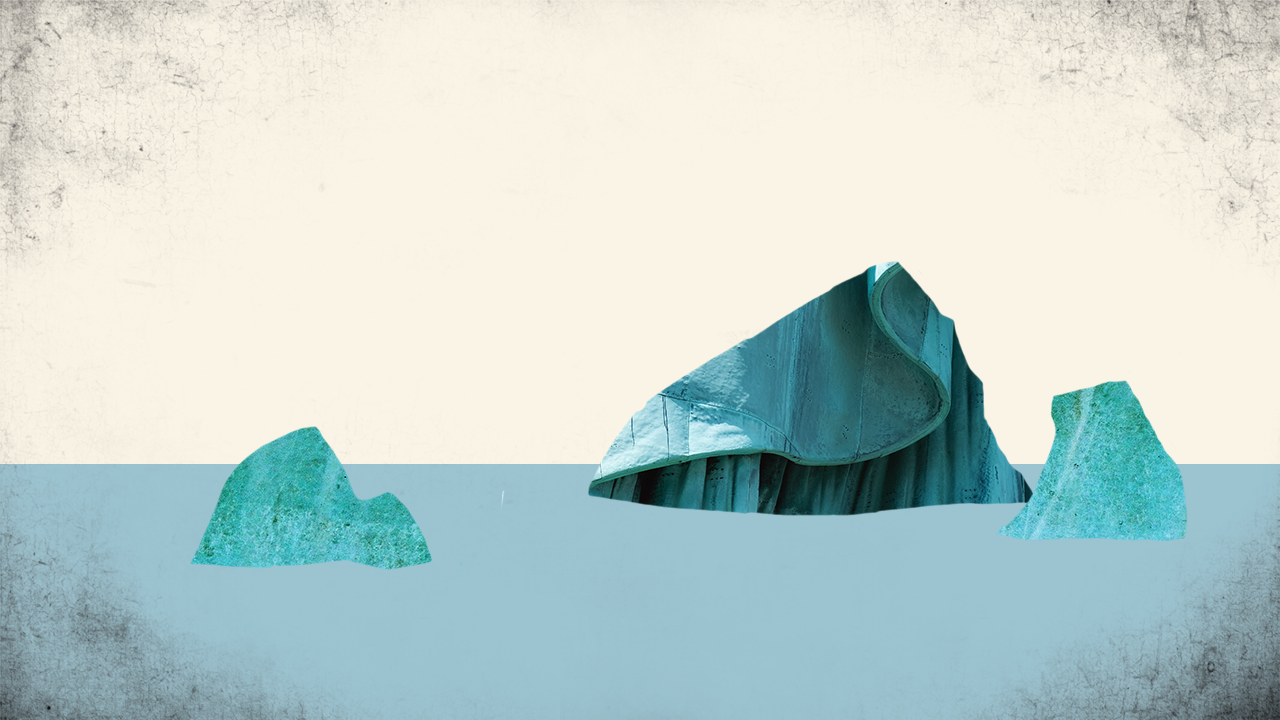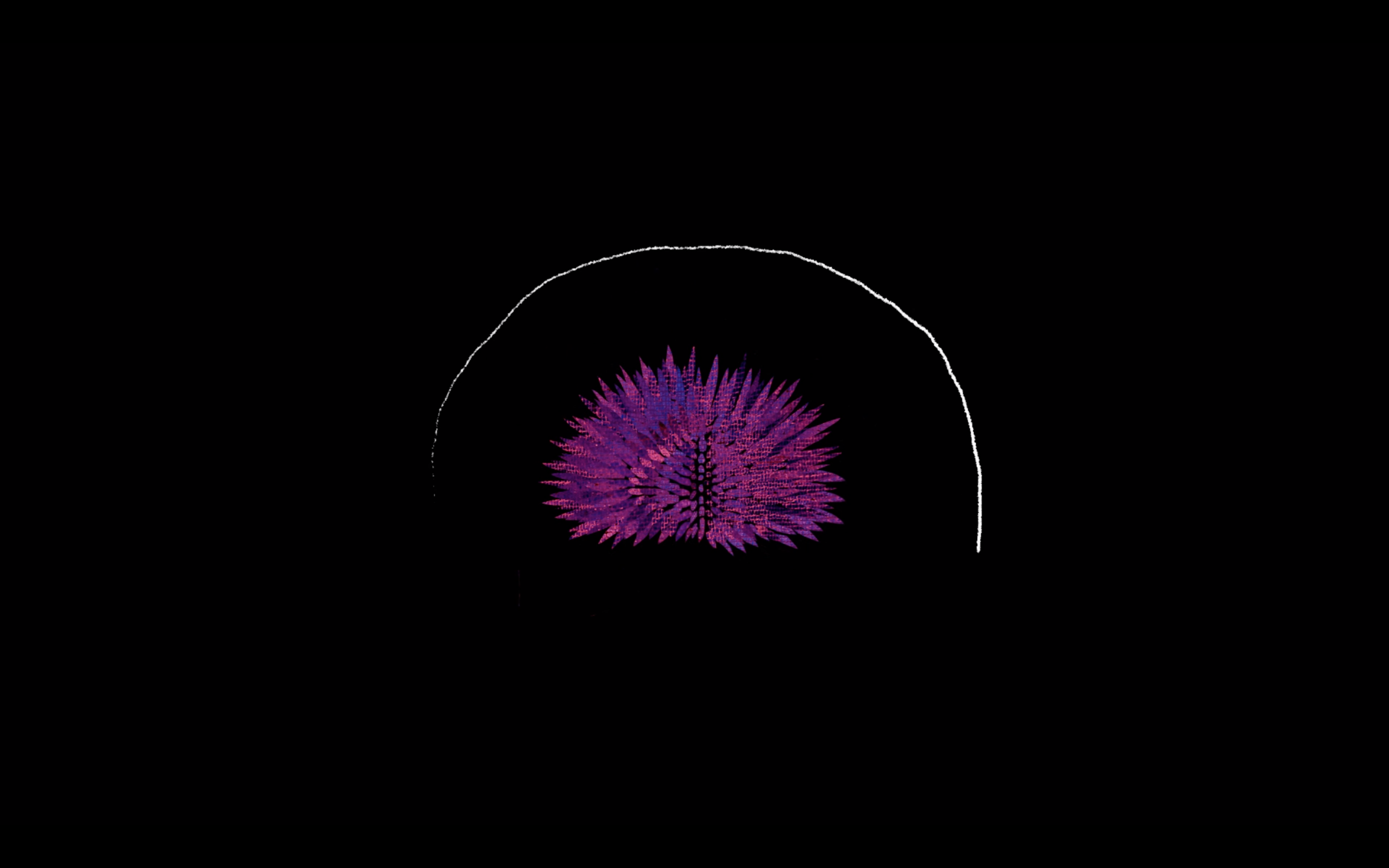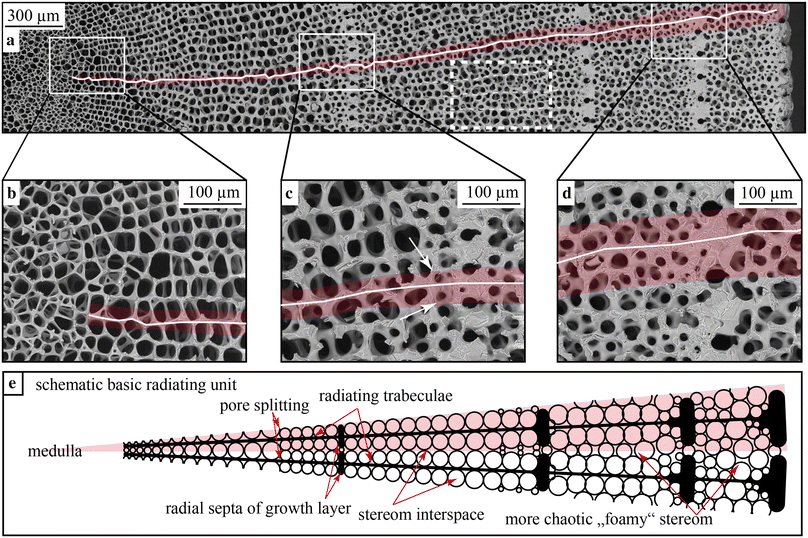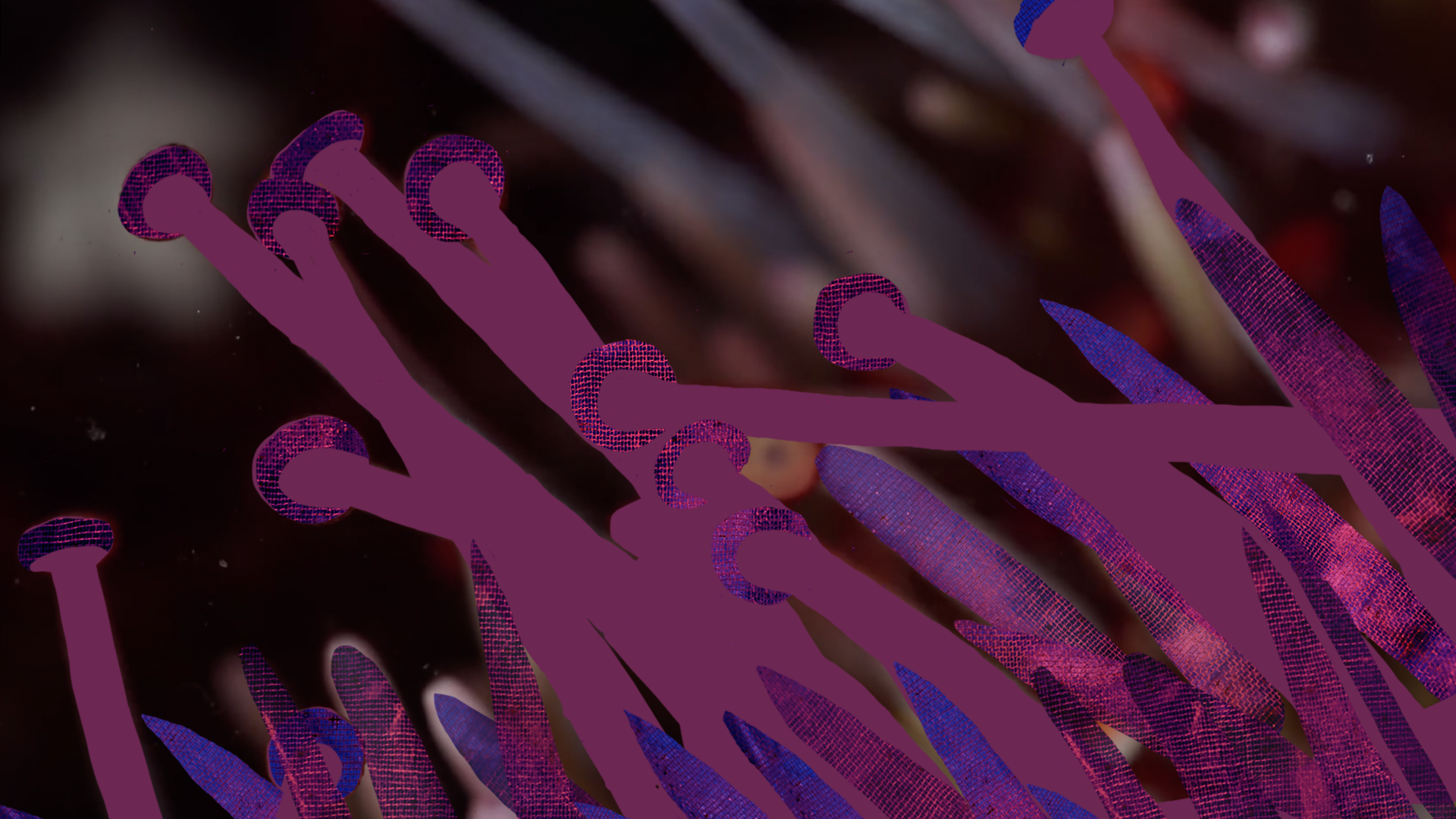the making of weird fishes
David Abram, asks in Decoding Animal ‘Do we really believe that the human imagination can sustain itself without being startled by other shapes of sentience?’ (Abram 2010) I believe motion graphics and radio are well suited to conjuring up these ‘shapes of sentience’ even when they are not physically embodied. Weird Fishes looks to frame such encounters with species through animated interpretations of radio, proposing a more audio centred media approach to communicating ecological issues (such as the effects of anthropogenic noise on urchins). Just as Off Track offers a rich sonic closeup of Australian ecosystems, Weird Fishes works on a micro-level, mirroring audio textures visually and encouraging mystery by showing only fragments of the sea urchins discussed. I aimed to use my design practice of illustration, rotoscoping and collage to create works that were immersive pockets - tiny, designed universes curated to provide contemplative spaces for viewers.
(Monterey Bay Aquarium 2019)
design practice, aims and intentions
The tentacular, relational methodology proposed by Kraus, Odell, Tsing and Haraway suggests that it's not just enough to create works that incorporate sound alongside visuals - my design practice and outcome needed to find ways to encourage an understanding of the organism and carve out space for ‘listening’ rather than just ‘hearing’ (Oliveros 2005) Odell outlines how designers, artists and architects deliberately create such spaces, using a local rose garden as an example. ‘Architecturally, the rose garden wants you to stay a while…it's wonderfully easy to get lost in this place.’ (Odell 2017) Works like Radio With Pictures, (Radio With Pictures 2012) My Grandmother’s Lingo, (SBS 2016) Sky Pesher (Turrell 2005) and The Inward Eye (Baker 2018) guided me in my process - in provided examples where a moment of ‘nothing’ (or contemplation) was designed, with great benefit to the audience
(Baker 2018)
(Sky Pesher 2005)
(Polach 2015)
cutting the audio
In constructing narratives in a climate crisis I realised my approach differs from Jenny Odells. Her writing on listening, contemplation and ‘doing nothing’ is a primary influence of this project, but I disagree with her assertion that we must ‘fiercely protect our human animality against all technologies that actively ignore and disdain the body...and the body of the landscape we inhabit’ (Odell 2017). I disagree because I don’t believe motion graphics or radio disdain the body or the senses. The process of creating Weird Fishes proved that motion and radio can simplify complex problems into engaging audio-visual narratives that promote contemplation. I had initially worked with three podcast rescripts (urchins, whales and artificial reefs) but after being cautioned that this was far too ambitious, I eventually settled on the urchin podcast - mimicking Tsing’s approach to exploring underrepresented critters.
original podcasts
isolated urchin sounds
two minute rescript
urchin rescript
early style frames
Initially inspired by collage based animation works such as Thylacine Condor (Thylacine Official 2019) and Living With The Locals (ABC Indigenous 2018) I created a range of style frames and boards, as well as colour palettes - which in hindsight did not suit the scripted content or materiality of sea urchins. I continued to use collage as my primary method of design and animation throughout the project, but my degree of success with these collages was directly linked with how closely I’d been involved in the urchins physically (rather than their scripted, literary portrayals). A simple walk along the shoreline at the start of the process could have saved me a lot of time and confusion and imbued my work with more authenticity
(Thylacine Official 2019)
(ABC Indigenous 2018)
early animatics
When I tested my early animatic on tutors and peers I realised that I had missed vital steps in the process. The animatics were shallow and lacked detail or signs of any image experimentation in my process so I returned to the drawing board.
back to the drawing board
Tutor feedback prompted me to work in smaller, achievable blocks - creating GIFS as image and motion tests. After encouragement from tutors and peers and an introduction to the Radio With Pictures episode ‘Like An Animal,’ (Radio With Pictures 2012) I decided to stick with black as a background, as it focused attention on sound rather than screen and created a sense of intimacy. ‘Like An Animal’ also provided an example of audio-visual storytelling at a slower pace - where the animation simply involved turning static layers on and off. I worked to incorporate this sparse approach to my animations.
(Radio With Pictures 2012)
return to urchins
User testing of these initial GIFS showed me that they were too low in image quality and childlike in style to truly reflect the subtleties of the Off Track episode. The mystery and peculiarity of the audio were lost in these blatantly recognisable, obvious depictions. I realised I had to start over and work on a material level rather than a literary one - and I endeavoured to find visual textures and collage approaches that replicated the textures of the audio.
(ABC South East NSW 2018)
(Monterey Bay Aquarium 2019)
design research in rock pools
By going out and harvesting sea urchins myself, as well as reading various scientific papers on urchin anatomy I became familiar with their beautiful purple, reddish colours and the cross-hatched, textures of their spines. I ate them, drew them and got up close to them - cultivating what Odell refers to as the ‘observational eros’ in my design practice (Odell 2017). I also searched for materials I could begin to collage with and found a series of key stock images that resembled the colours and textures I had seen in urchins on my home reef. I also returned to my usual motion practice of rotoscoping, after watching hours of urchin close-ups and realising that their alien-like appearance on a micro-level reflected the peculiar urchin recordings in Soars’ Off Track episode.
(Wilson et al. 2019, p.2-7)
(Lauer et al. 2018, p.139-154)
(Lauer et al. 2018, p.139-154)
(Deep Look 2016)
(Haskard 2017)
(Unsplash 2019)
(Unsplash 2019)
(Unsplash 2019)
(Grossmann et. al. 2013, pp.301 -315) (Unsplash 2019)
(Unsplash 2019)
My GIF motion tests and previous animatics showed that I was heavily reliant on visual metaphor - I was forcing this approach to storytelling where I should have been trying to understand and replicate the materiality of sea urchins. It wasn’t until late in the process that I even realised that urchins use tiny, suction capped tube feet for locomotion. I had been so caught up in literal narrative that I had forgotten form, function, materiality and observation.
a new visual approach
Motivated by my renewed fascination with urchins on a micro-level I began trying to reflect the textures and colours of urchins in 2D, combining my design practice of drawing and collage to replicate stills I had collected of urchin close-ups. This approach to framing became a deliberate narrative choice, one that could capture the inherent strangeness of sea urchins, better serving my illustration - collage style and my content. Collage here allowed me to replicate what I saw in the scientific journals and my own knowledge of urchins - that they are latticed, brittle, cross-hatched, tentacular and beautiful in colour. The textures I had found on creative commons website Unsplash were also better suited to this new framing - as the previous tiny urchin seemed more like a ball of purple fuzz than a gorgeous, mysterious creature.
(Naghdy 2014) (Unsplash 2019)
rotoscoping
What followed was a rapid assembly of different shots of sea urchins which I would then rotoscope and animate so they twitched and shifted. I kept my animation practice very simple because of time constraints and my motivation to privilege the audio, not distract from it with fast-moving graphics. I returned to Radio With Pictures ‘Like An Animal’ (Radio With Pictures 2012) and used this as a guide for how simple 2D animation and character design could shadow radio narratives about critters.
designing critters
The process of creating Weird Fishes taught me about the flaws in my design process, as well as revealing the strength of some of my approaches. Reframing urchins on screen proved that engagement with the content on a micro-level is key to understanding what you are designing, and replicating its materiality. Design should not be practiced exclusively behind a desk - my time fishing around in rock pools taught me as much if not more about the affordances of textures and how I could use collage to portray urchins as the hours I burnt through at a computer. It may seem obvious but engaging with and observing the systems, creatures or objects you are designing with (ie getting your hands dirty) is important to creating works that have depth. As the project progressed my approach to work become increasingly similar to the methodology proposed by Tsing and Odell - namely one that observes the detail and minutia of a single species to reveal profound networks between humans and non-humans. During this process, I learnt as much about my design practice by making as I learnt about sea urchins by making.


























































